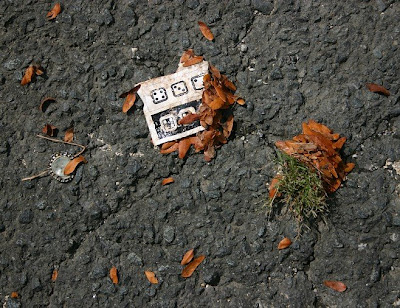How to create a path to inspiration by going around a creative block
Creative work thrives on change and variation. Whether you're a professional artist or weekend hobbyist, creativity needs an open mind in which to work and an open mind is one that allows inspiration to enter at any time. However, inspiration is unpredictable when it's allowed to show up on its own; sometimes, it needs to be "found".
To give you an example, it's no longer enough for me to shoot a random subject. I need to know in advance what I want to capture as well as have a reason for capturing the shot. After writing out my ideas and overall thought process, I decided to shoot found objects. Found objects, random items that are found (as they lay) in public spaces, have always fascinated me so I figured this would be a good place to start. But I wanted to spice up these shots, give them something extra beyond just being pictures on paper. Since I write on a regular basis, I thought it would be interesting to add a story to each shot; taken one step farther, I decided to let the subject of the photograph dictate the story.
That's where I came up with found objects as art and fiction. I realized that those objects somehow got to that spot, either on purpose or accidentally. Who was it that dropped that bottle cap? Did the wind blow that piece of paper into the pile of leaves? These types of questions started popping into my head and that's when I knew I was inspired.

Am I suggesting that every creatively blocked photographer start shooting pics of street litter? Not necessarily. What I want you to do is think of something random that most people don't pay much attention to. Maybe it's retail receipts, lint, lost change underneath couch cushions, or even chewing gum stuck to a sidewalk. Find something that is often overlooked and start taking pictures. Ask yourself how that item got there. Try and figure out what, or who, it belonged to before it was left there. Jot down notes on what comes to your mind. And most important, keep taking pictures! Spend an hour going through this process. When you get home or back to your studio, develop the shots and compare them to your notes. At that point, let the thought process flow naturally and see where it takes you.

Inspiration isn't easy. Sometimes it comes naturally but a lot of times, it's not there when we need it most. So go out and find it. Create your own path to inspiration and creativity; and remember, creativity isn't just a fun product, it's a fun process.
(originally posted in JPG Magazine's online community on 10-21-2008)
© 2008 joe blend. All rights reserved.












No comments:
Post a Comment